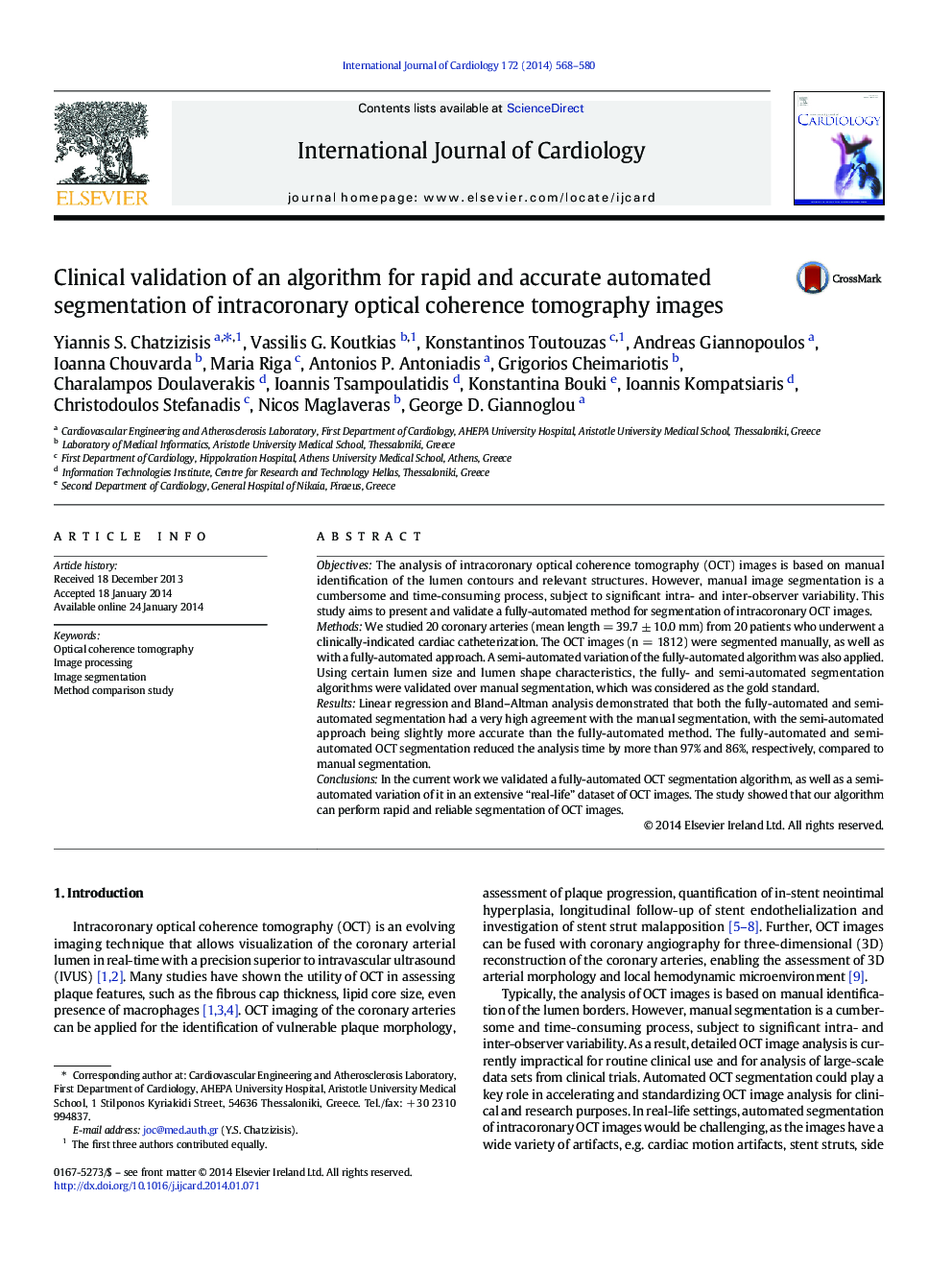| Article ID | Journal | Published Year | Pages | File Type |
|---|---|---|---|---|
| 5971756 | International Journal of Cardiology | 2014 | 13 Pages |
ObjectivesThe analysis of intracoronary optical coherence tomography (OCT) images is based on manual identification of the lumen contours and relevant structures. However, manual image segmentation is a cumbersome and time-consuming process, subject to significant intra- and inter-observer variability. This study aims to present and validate a fully-automated method for segmentation of intracoronary OCT images.MethodsWe studied 20 coronary arteries (mean length = 39.7 ± 10.0 mm) from 20 patients who underwent a clinically-indicated cardiac catheterization. The OCT images (n = 1812) were segmented manually, as well as with a fully-automated approach. A semi-automated variation of the fully-automated algorithm was also applied. Using certain lumen size and lumen shape characteristics, the fully- and semi-automated segmentation algorithms were validated over manual segmentation, which was considered as the gold standard.ResultsLinear regression and Bland-Altman analysis demonstrated that both the fully-automated and semi-automated segmentation had a very high agreement with the manual segmentation, with the semi-automated approach being slightly more accurate than the fully-automated method. The fully-automated and semi-automated OCT segmentation reduced the analysis time by more than 97% and 86%, respectively, compared to manual segmentation.ConclusionsIn the current work we validated a fully-automated OCT segmentation algorithm, as well as a semi-automated variation of it in an extensive “real-life” dataset of OCT images. The study showed that our algorithm can perform rapid and reliable segmentation of OCT images.
